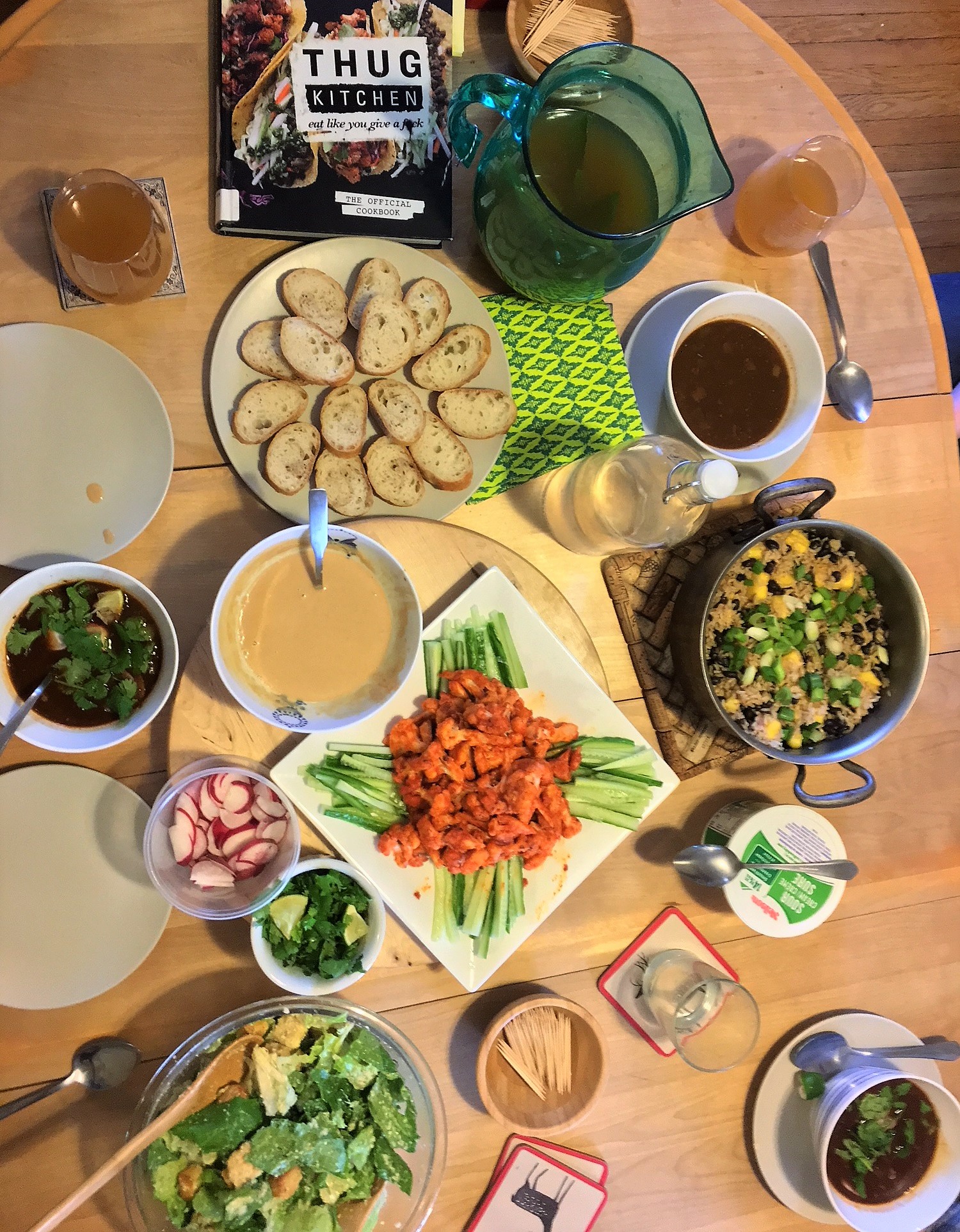- Written by Katrina, Diversity & Adult Services Librarian
- Category: Blog
What is a podcast?



“Katherine? Katherine Lewis, is that you?”
Susan, mouth stuffed with Boston creme donut, looked up.
“Girl Guide cookies and snow angels,” the woman bubbled. “Remember?”
Continue story. Take chances, fail in a big way, don't be a careful writer.
Final Tip from Larry: What's the Formula For Success? A bit of talent + bit of luck + A TON OF PERSEVERANCE= Being Published
As we gear up for our upcoming writing workshop here at Brampton Library, we decided to go straight to the source - the facilitator of the workshop, writer and teacher Larry Brown, to share his tips on getting past the blank page. The result? Four key strategies to keep in mind when getting started in your writing journey, the first time, and everytime.

The blank page: how do you get started?
Writing can start anywhere. It starts with a single sentence that somehow lodges itself in the writer's mind. It could be a song lyric, a line in from a tv show, or something you overhear someone say. Larry urges writers to be in permanent eavesdropping mode, keeping themselves open to words, sounds, and moments.
Inspiration does not need to come in written or verbal form, think (or look) outside of the box. It could be a simple image, for example, noticing the way the light slants low and early in November - that spurs an idea, a character, or invites the writer to explore a moment or feeling further. Again, being open and receptive to snapshots of life that rouse curiosity, interest, or emotion is the key to sparking inspiration and momentum.
Once an idea, a sentence, or a scene of inspiration hits, follow it. You might not know where it's going, but the whim to use your imagination and take a look around your story is important. Larry reminds us that in writing, the opportunity to make a left hand turn always comes up - go with it! Do not spend too much time questioning or over analyzing where a story is going. Follow it, see where it leads.
Get thoughts and ideas out of your head, Larry says. Get them down in writing and start exploring. What happens when you feel stuck? Ask questions. A lot of writing is answering questions. For example, on a first date, do your characters sit at a table, which table? Why? Answer the questions! Questions give you insight and the opportunity to achieve thoughtful detail descriptions and perpetuate the narrative.
If you're feeling inspired to write or want the opportunity to learn the ropes from Larry Brown, grab your free workshop ticket for our "Conquer the Blank Page Writing Workshop" here happening on July 28th, 1 - 4pm at Chinguacousy Branch, or call 905-793-4636 to register your spot!
Back in February, artist Michael Burtt heard that Brampton Library would be a great place to make art - and so he made his inaugural visit to Bramalea GO Station. The first things he noticed when he arrived were big, busy roads, large vehicles...but also park space, pathways, and benches. This got Michael thinking of all the hidden places in our City, and inspired him to create a project that could explore this concept creatively.
After visiting our Chinguacousy Branch, Michael fell in love with our space and decided that the library would be the ideal venue for his new project.
So, what is this new project?
Michael says, “The Secret Rivers project is about exploring the rivers that brought people to Bramalea, to Brampton. This could be from wherever they come from in the world, other places in Canada...but I’m also interested in the secret rivers, walkways, and pathways that get them from their apartments to the library, to the park. So we are learning about these things.”
In his initial visits to our library, Michael introduced the idea of paper weaving, using different coloured strips of paper and stamps to capture the answers to the following simple questions:
Participants then wove these personalized strips through a large loom that Michael created, to combine with other people’s answers and create a beautiful story, represented visually. The result was stunning.
The larger Secret Rivers Project will involve paper weaving mixed with audio recording to create a very large weave that will hopefully be installed in the library space in September.
Michael encourages all of our customers - adults, kids to come and participate in this project, share their stories with us and their families, and be a part of this beautiful creative process, presented by Making Room Community Arts.
Interested? The program runs every Tuesday and Friday afternoon at Chinguacousy branch until September 7th - details in our calendar.
Last year, on my birthday, I received a great gift -- an email from an old friend inviting me to join in a great new experiment she was starting: a Cookbook Club!
Our club began with 6 members, all of us amateur home cooks with differing palates and cooking interests, but all with a desire to try new techniques and expand our repertoires. I’m fairly new to cooking. I’ve always enjoyed baking -- cakes, cookies, muffins, yum! -- but over the past few years I’ve developed more of an interest in cooking.

Here’s how it works: every month to six weeks one of our members takes their turn to host the club for a Sunday afternoon lunch feast. The host chooses a cookbook ahead of time and each member gets a copy from the library, or shares purchased copies with each other. Each member then chooses a recipe or two from that book to make at home and bring to the meeting. We tell each other what we’ve chosen so that no one is bringing the same dish and we can ensure a balanced meal with starters, mains and dessert (even though a 6-cake meal does sound pretty good to me…)
When we sit down to eat, we tell each other about the cooking process of the recipe we chose, our experiences with the book, how easily we were able to follow the instructions, what we thought of the author’s voice. Sometimes, some of us will have tried other recipes through the weeks before the meeting and will talk about those as well. Every time, without fail, the food is delicious and more than we can eat in one sitting! We’ve learned to bring our own leftover containers with us to take home samples of each of the dishes for the next day’s lunch as well.
When I choose my dish each time, my first instinct is to make something I think sounds delicious, so I flag the yummiest sounding recipes in the book with post-its. Then I think about which of those dishes might allow me to try something new and stretch my cooking abilities. Since joining the cookbook club I’ve tried making: pakoras, shrimp grits, stuffed mushrooms, and even a -- admittedly unsuccessful -- roulade (a cake with jelly and ganache rolled up in it)!
 As a former extremely picky eater, It’s been fascinating to try all kinds of new tastes in the kitchen and I’ve discovered so many dishes and cuisines I never would have thought I would enjoy making (or eating!). I’ve found that the control I have when I cook my own food from scratch allows me to try foods I might have turned up my nose at 10 years ago. I know all the ingredients and I’ve seen how they work together.
As a former extremely picky eater, It’s been fascinating to try all kinds of new tastes in the kitchen and I’ve discovered so many dishes and cuisines I never would have thought I would enjoy making (or eating!). I’ve found that the control I have when I cook my own food from scratch allows me to try foods I might have turned up my nose at 10 years ago. I know all the ingredients and I’ve seen how they work together.
Cookbook Club has been such a cool experience. I’ve made new friends, found some new favourite cookbooks, and eaten A LOT of delicious meals. I take out new and recommended cookbooks from the library all the time to try and select my next host’s pick. Everytime I tell someone new about the club (which is often, I talk about it a lot) they ask, “are you looking for any more members?” But why not start your own?
If you’re interested in starting your own cookbook club, here are some tips!